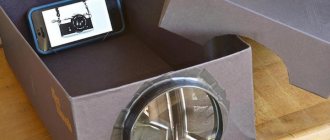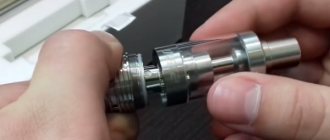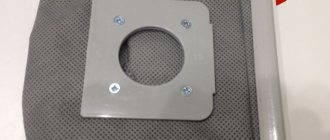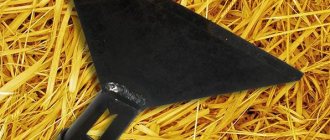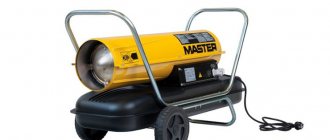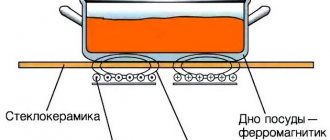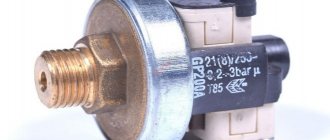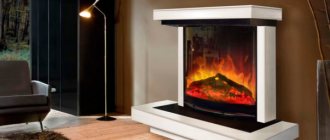Possibility of making your own screen
There are a large number of projection screens on the domestic market that fully meet all requirements. However, many potential users are put off by their relatively high prices. Therefore, the question remains: is it possible to make a screen for a projector with your own hands? The answer to this will depend on the requirements for the quality of the video being viewed.
So, if there is no need for high resolution, clarity of movements and detail of the picture, then it is quite possible to use a wall painted white instead of a screen. If the user is interested in obtaining a high-quality image, then he will definitely need a projection screen, which will not be difficult to make at home .
Make a frame
The frame will be the base on which the projector screen will be fixed. Creating a smooth frame will help optimize the screen as much as possible. Consider the following points:
"Dad is offended." Agata Muceniece about her relationship with Priluchny after the divorce
Rare shot: Viktoria Isakova showed her grown-up daughter from Yuri Moroz (new photo)
A student at the Vietnam Police Academy shared how she takes care of her facial skin.
- If the boards are too long, cut them to the desired length.
- Place corner braces on the four sides where the boards meet.
- Install screws into the wood strips through the corner brackets.
- Check how stable your frame is. If necessary, add additional parentheses.
Projector screen requirements
To make a projection screen, it is necessary to take into account a number of conditions to make the perception of the image as comfortable as possible. These primarily include the rules for placing spectator seats:
- the first row of seats should be at a distance of two screen heights (no less);
- The last row of seats should be located no closer than 6h, where h is the height of the screen in meters:
- the distance from the bottom edge of the screen to the floor must be at least 1.2 m.
Based on this, the user must take care of choosing the appropriate room in which to view it.
You also need to take into account existing video image formats (the ratio of frame width to frame height):
- standard - 1:1;
- video format of old television - 4:3;
- wide format - 16:10;
- TV video format in HD quality - 16:9;
- 3D format - 2.35:1.
On a note! For home cinema, it is recommended to use 4:3, 16:9 and 2.35:1 formats. It should not be forgotten that the screen should be located in front of the viewer, and not in front of the projector.
Creating a Fixed Screen
First, find a good location. First, you'll need a wall with enough clear space to accommodate the finished screen. Secondly, there must be enough space in the room to place the projector screen at the proper distance from the surface on which the image will be broadcast. Please note that different projector models may have different requirements.
Why French children behave well: eight ways to raise them
Lost weight: what Sofia Tarasova sacrificed for the sake of “VIA Gra” (new photos)
The money tree pleases with lush flowering: my secret is in caring for the leaves
Screen material
When making your own projection screen, you can use a variety of materials, including:
- sheet of plasterboard or foamed PVC;
- Fiberboard or cardboard;
- thick linen fabric;
- vinyl cloth;
- raincoat fabric (raincoat fabric);
- fabric or PVC film for suspended ceilings;
- synthetic material for advertising banners.
Each of these materials has advantages and disadvantages, so the projector owner will have to decide what to make the screen from independently, based on his preferences.
Banner fabric
For making a screen, banner fabric is best suited - a synthetic material with high strength and excellent reflective properties.
Advice! When making a screen from a banner that has previously been in use, you need to make sure that there are no folds or damage on its surface.
PVC film
A good option for projection screens in terms of price/quality ratio is synthetic fabric or PVC film, which are used in the design of suspended ceilings. The only condition is that the material must have a matte texture. Then there will be no glare on the canvas, typical of glossy coatings. In addition, it is desirable to have a lining made of black polyethylene film - this will reduce the transparency of the material.
Raincoat and vinyl fabric
Good screens are made from “raincoat” - a durable material that is not afraid of strong tension. In addition, such a fabric will be characterized by increased moisture resistance and immunity to contamination that occurs when you touch it with your hands.
Screens made from vinyl fabric are not inferior in quality to the above materials. However, it stretches easily and breaks if handled carelessly.
Thick linen fabric
Often, thick linen fabric, for example, a regular new sheet, is used as a material for making projection screens at home. It is stretched over the frame, and to increase light reflectivity, it is painted with white matte paint and/or supplemented with a backing made of thick black polyethylene film.
Drywall
Cheap structures that can provide minimal projection quality can be made from plasterboard, fiberboard or cardboard. To do this, just cut out a rectangle of the required size, paint it with white matte paint and fix it directly on the wall or on a special frame. These materials are used in cases where it is necessary to quickly organize viewing, and the quality of the image is not particularly important.
Algorithms for manufacturing various structures
There are several ways to make homemade projection screens. The choice of any of them is made based on the available materials and tools.
The simplest option (without installing special structures) is considered to be simply painting the wall onto which the image will be projected in the future . In this case, the procedure is as follows.
Preparing the wall
The surface of the wall to be painted must be perfectly flat. To do this, it is recommended to replaster it, periodically checking with a building level the degree of verticality and smoothness of the surface. Then primer paint is applied to the wall, which should provide the final layer of paint with maximum smoothness.
Paint selection
Depending on what purpose the user is pursuing, water-based, automotive or reflective acrylic paint can be used to make the screen.
Important! The best results are achieved by using so-called screen inks, which provide high clarity and correct color rendition when projecting images. In addition, this product is capable of absorbing light, which is important when viewing.
The most commonly used paint is white, gray or black.
Wall marking
Having determined the dimensions of the screen, its boundaries are marked on the prepared wall. You can use masking tape for this. Many users highlight the borders of the screen surface with a decorative frame, but it is best to paint the entire wall - this will allow you not to experience discomfort in the future when viewing images of various formats.
Wall painting
The paint is applied in vertical stripes, starting from the top border of the screen. Perform the work with a roller or using a spray gun.
Advice! It is not recommended to use paint brushes, as hairs that have fallen out of them may remain on the wall.
The correct selection of paint, taking into account lighting conditions and projector parameters, will allow you to get a fairly high quality image on the screen.
Screen made of fabric or synthetic fabrics
The algorithm for manufacturing projection screens from fabric or synthetic fabrics includes the following operations:
- marking the screen surface;
- installation of a metal or wooden frame;
- securing and stretching the fabric;
- decorative design of the perimeter of the frame (if necessary).
To correctly determine the size of the future screen, you need to turn on and configure the projector to the place where you intend to install it, and it is advisable to project a picture of your preferred format onto the wall . Next, straight lines are drawn along the perimeter of the image with a small margin, limiting the area of the light field.
Having decided on the dimensions of the screen on the wall, a frame made of metal corners or wooden slats (bars) is mounted on them. You can also use profiles made from aluminum sheets. The frame structure must be level and strong enough to withstand strong tension of the canvas. The top of the structure is covered with thin felt - this will smooth out the unevenness of the frame and the fastening elements of the canvas.
Advice! It is better to use a ready-made metal structure, for example, a tube for attaching curtains, as the supporting part of the frame (top rail).
A fabric or synthetic fabric is fixed in the upper part of the frame. If it is wooden, then use a stapler, fixing the material with staples (10-12 mm) on the back side of the frame. The canvas is attached to metal slats using superglue. Next, the material fixed on one side is stretched so that there are no wrinkles, folds or other surface defects. To stretch synthetic fabrics well, they are heated using a heat gun to a temperature of 60-70°C. After the material is stretched, it can be painted with screen paint.
Making a screen using linen material
In this case, the work is carried out in two stages:
The first stage is making the frame
You need a rigid frame on which you will need to stretch the canvas. It can be made from wooden beams or a metal profile, for example, duralumin. The upper part of the frame, which carries the main load, can be taken from a ready-made structure. For example, from tubes for attaching curtains (usually they come complete with ceiling mounts). It all depends on your plan: where exactly and how the screen will fit into the interior.
Consider the option of making a frame from wood. In this case, we will need:
- smooth straight bars of the required length;
- metal boxes (profiles) made of aluminum or duralumin;
- metal corners for rigid fixation of frame parts to each other;
- fabric to create a surface (it’s better to take a little more than necessary);
- backing material (thin felt, polyethylene);
- tools and consumables (tape measure, construction knife/tailor's scissors, screwdriver, furniture stapler with staples, sandpaper, hanging lugs, self-tapping screws).
The frame must consist of at least 5 parts: four form the perimeter (the frame itself), and the fifth (maybe the sixth) must be inserted between the long sides, adding rigidity to the structure, otherwise the frame may skew or become twisted (“screw”). It is possible to use strips of dense fabric to mutually tension the opposite sides, but this should be done only after forming an exact rectangle.
After sawing the bars, all ends and edges must be sanded. You can verify the correct shape of the frame by measuring the diagonals: if the distance between the opposite corners is the same, then the bars converge exactly at right angles:
The second stage is stretching the fabric
When the frame is ready, you can stretch the canvas (vinyl, raincoat fabric). It is better to work on a soft surface so as not to damage the fabric. We lay felt or polyethylene, if necessary. Next, we staple the material to the tree in this order:
- We start from any angle.
- We select an angle along the short side, stretch the material a little and fasten it.
- We start from the already nailed short side, shooting the stapler alternately on opposite sections of the long sides. Each time before attaching, we stretch the fabric slightly so as not to leave wrinkles. So we move to the edge of the frame.
- We fasten the fabric along the second short side and in the last corner.
- We finish the work by cutting off the excess material with a knife.
We attach ears to the frame for hanging. You can make a contrasting black frame to give it a noble look.
In the following video you can see how a screen with a diameter of 3 m is made from a material for suspended ceilings - satin wicker, which is attached to an aluminum frame:
Rolled screen made of synthetic fabric
Owners of projection devices prefer screens made from roller blinds. In them, the canvas is wound onto a shaft, which is hidden inside the tube, and is pulled out as needed . Such structures can be either wall-mounted or floor-mounted; they can be mounted on a tripod or permanently mounted on a wall or ceiling. Sometimes roller screens are equipped with a motorized electric drive with automatic control. You can buy them at specialized sales points.
The main element of a roll screen is a tube in which the rolled sheet is stored. Anyone who has basic plumbing skills can make it with their own hands.
Required material
For this you will need:
- a piece of plastic pipe with a diameter of 50 mm;
- 2 rolling bearings;
- synthetic fabric;
- cord for hanging the tube (if necessary);
- 2 Twist off lids with a diameter of 53 mm;
- wooden slats with a diameter of 25-30 mm.
Work algorithm
The algorithm for manufacturing a simple tube with a fabric screen includes a sequence of such actions.
- The tube itself is prepared, for which, using a grinder, a plastic pipe is cut to the size of the screen and a cut is made along its axis. The width of the cut is approximately 1 cm. The edges of the hole are carefully cleaned so that there are no burrs or sharp protrusions.
- One of the wooden slats is used as an axis for winding the screen. Its length should be 5 cm greater than the width of the canvas. Bearings are tightly fitted onto the ends of the slats so that 1 cm of the board still peeks out from them on both sides. If necessary, the seats on the rail are adjusted to the inner diameter of the bearings.
- One end of the canvas is attached to the rail using a stapler. It is recommended to tuck the material by 2-3 cm before doing this. For reliability, you need to pin the edge of the fabric with two rows of staples.
- The canvas is carefully wound onto a rail, which is then inserted into the tube so that the bearings do not protrude beyond the ends of the latter. In this case, the free edge of the blade is passed through the cut.
- The edges of the tube are closed with Twist off type lids, and a hole with a diameter of 2 cm is pre-drilled in one of them, through which the axis for attaching the handle will pass. If necessary, the ends of the tube are wrapped with electrical tape, adjusting their diameters to the size of the caps.
- Through a hole in the lid, a flywheel is attached to the rail, with which you can roll up the screen. The design of the flywheel can be arbitrary. You can find quite a lot of videos on the Internet that show in detail numerous options for manufacturing roll-up screens with a drive of this type.
- The second strip is cut to the size of the canvas. The free edge of the material is attached to it with a stapler. Then the rail is rotated so that the row of staples is under a layer of fabric, which must be stapled again.
- A cord is attached to the tube, with which you can carry the screen or hang it on a wall or tripod.
Advice! Good results can be obtained if, instead of a screen, you use a roller shutter for windows with a single-color curtain of the required size. The fabric in roller blinds undergoes special treatment and therefore does not deform and does not collect dust.
So, every home craftsman can easily make a projection screen on his own. Complexity and appearance will depend on image requirements, availability of required materials and plumbing skills, from a painted wall to a roll-up of synthetic or electrically powered fabric.
Ending the process
Although your screen is technically ready to use, there are a few more elements that need to be added. This will allow you to hang it on the wall easily and also give it a finished look.
Women's jeans: before you buy them, you need to pay attention to one detail
Smooth and fresh skin: dermaplaning, or why a woman needs to shave her face
“We are still friends”: Derevianko commented on the breakup with his wife
- Place a number of picture hangers at equal distances on the top frame.
- You can highlight the edges of the screen using black masking tape. This will give you a beautiful stylish look.
- A dark frame will also help improve image quality by reducing light reflection.

